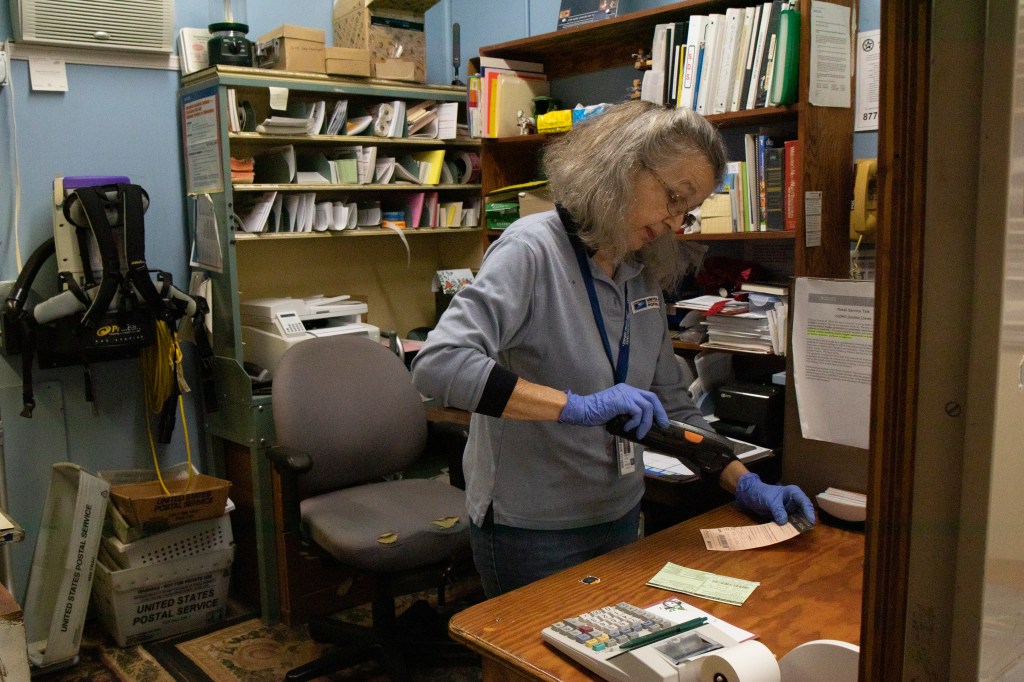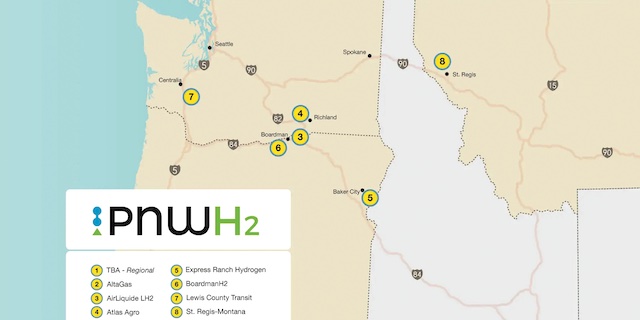More than the mail: Rural Oregon’s postal service, a lifeline and a lifestyle
Published 12:00 am Thursday, December 24, 2020

- Judy Allen, who runs Walton Post Office, processes mail.
DORENA, Ore. — Peggy Cameron drives a little green truck 44 miles a day delivering mail in Dorena, a rural community 45 minutes southwest of Eugene.
Cameron has delivered mail on this route for the U.S. Postal Service since 1997.
Cameron’s services are “a lifeline.” According to the Federal Communications Commission, one in three rural people have poor or no internet. In areas private carriers like FedEx don’t service, residents rely on USPS to deliver medications, bills, paychecks and parcels. And in many rural areas, the Post Office is the heart of the community.
Cameron does more than stick letters in 390 mailboxes.
For some residents who come out to chat, Cameron’s is the only face they’ll see that day.
When someone doesn’t check their mail two or three days, she knocks on the door and makes calls. Some residents on her route have cancer, others dementia. Now and then, someone falls.
“I check to make sure people are OK,” she said.
Sometimes, Cameron gets an envelope with a name scrawled across the front — “GRANDMA” — no address. But she usually knows where “grandma” lives, so she writes the address herself.
In her free time, Cameron volunteers at Dorena’s food bank, Up River Pantry. On her mail route, she often encourages hungry families to visit the pantry.
Before USPS rules changed, Cameron and her team also used to answer Santa letters.
“It touches your heart to read some of the Santa letters, like a kid who says all they want is for their mom to be happy,” said Tami Berry, postmaster of Cottage Grove Post Office, who also remotely manages the Dorena and Lorane offices.
Berry turned away, wiping her eyes.
“We do a lot of things besides just delivering the mail,” she said.
During the pandemic, people are relying on USPS even more.
Prior to COVID-19, Berry said, Cottage Grove handled about 1,000 packages daily. Now, with more people buying online, it’s 3,000. At Christmastime, she expects 6,000 parcels daily.
“I think the post office is more important now than anytime,” said Jeff Valancy, Cottage Grove’s supervisor of customer service.
Delivering mail in the far reaches of rural Oregon can be a challenge.
Oregon, according to USPS officials, has 166 post offices with rural routes.
Ernie Swanson, USPS spokesman, said the average rural Oregon route is 37 miles. The longest is nearly 151 miles. Many routes, carriers say, include winding highways, muddy lanes and in winter, roadside ditches made imperceptible by snow.
“City” routes in rural Oregon — often meaning the few small streets in town — are serviced by USPS right-hand-drive, long-life vehicles, or LLVs. “Long life” is no understatement; 70% of USPS’s LLVs are between 25 and 32 years old, and maintenance costs are high.
Owen Dart, 33, acting postmaster at Veneta Post Office in Lane County, said his LLVs are “constantly breaking down.” The few USPS vehicle mechanics in his county don’t work weekends, making logistics challenging.
“It’s hard,” Dart said. “On some level, though, I like the challenge. I like coming in on a crazy day — parcels stacked all over the place, letter mail high, maybe it’s raining — and being kind of a cheerleader.”
Starting January 2022, USPS will gradually replace its LLV fleet.
In contrast, rural mail carriers like Cameron don’t wear uniforms, are contracted rather than employed by USPS and usually drive their own vehicles.
This, too, presents challenges. USPS, workers say, plans to phase in requirements soon that prohibit contract drivers from using personal vehicles more than five years old. One rural carrier who’s been driving her 86-mile route for decades said she plans to retire in a year when the rules kick in because she can’t afford a new vehicle.
USPS, experts say, is overstretched, especially in rural areas. The agency’s mission, to guarantee the same postage rate for all Americans regardless of location, is not profitable.
“We’re a service. We’re not expected to make a profit,” said Swanson of USPS.
When USPS announced in 2011 it would close up to 3,700 locations nationwide to save money, Walton, an unincorporated community of 325 people in the Oregon Coast Range, was on the hit list.
Judy Allen, 72, who runs the Walton Post Office, recalls nearly everyone in Walton turned out to protest. In response, USPS kept the office open but cut hours.
The office, established in 1884, now greets visitors with peeling paint and a missing sign, surrounded by a checkerboard of farmland and forest.
Inside, there’s a well-used “little lending library” where community members exchange books beside a space where neighbors can greet each other and catch up on life.
“It might not look like much, but I think people feel the post office is the community,” she said.
It was a cold November day, and after Allen finished sorting the morning mail, a local walked in.
“How’s everything going down your way?” she asked.
“Wet,” he replied.
They both laughed.
“Have you met your new neighbors yet?”
“Yeah, seem like nice people. The guys offered to help trim the orchard.”
Everyone who came in seemed to know Allen well. One older man, Marty Deville, even gave her a guava he grew in his backyard — his “grand experiment” to grow tropical fruit in Oregon.
Allen said her work is tiring because she must show up six days a week, even if she’s sick. But she loves the community, she said. She also loves collecting stamps.
“I think sometimes people get irritated when I sell them stamps because I get too excited about it. Like: ‘Wait, but you haven’t seen them all yet!'” she said, thumbing through her stamp binder.
Allen lives across the street from Walton Post Office, and when asked how long she plans to work, she said, “I’ll work until I can’t walk cross the street anymore.”
Cameron, who runs the Dorena route, expressed a similar sentiment.
“It’s a stressful job, but I love my team and my community,” she said. “It’s family.”


